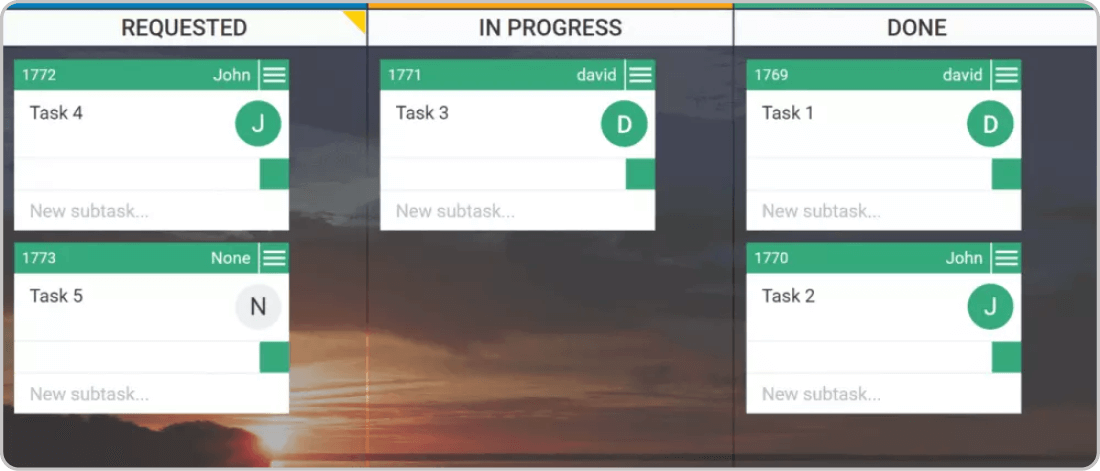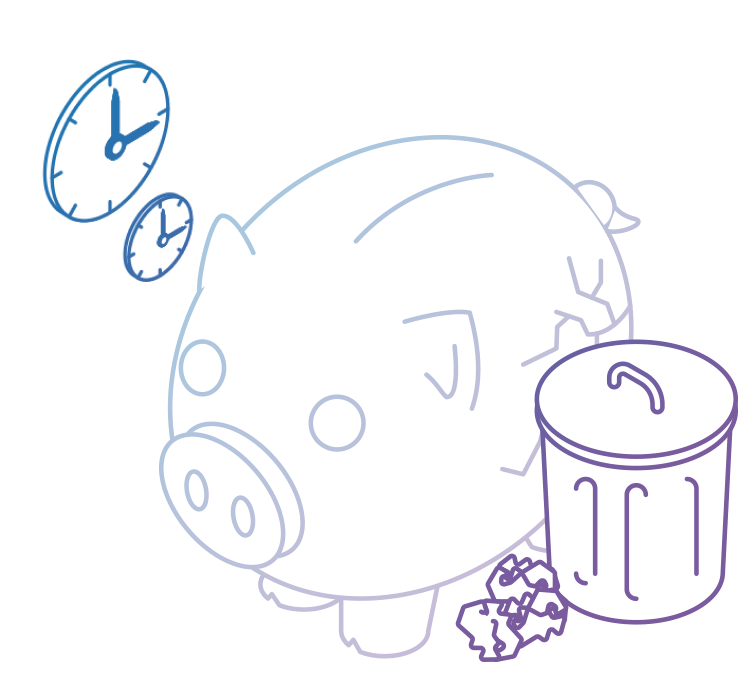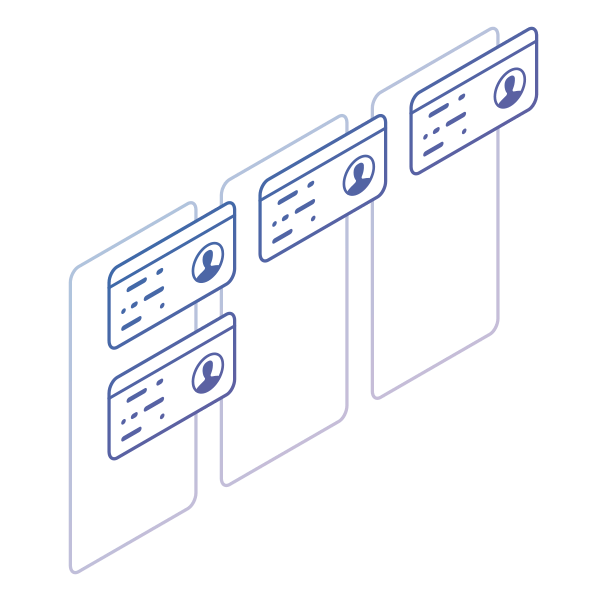It’s often overlooked that improving the small things around you can greatly impact the large aspects of your work process. Thankfully, the 5S method can help you make your workplace a sanctuary of productivity.
It will allow your team to work with more discipline and apply every tool in the Lean arsenal with less effort. Stick to the end to understand why.
What Is 5s and How Is It Linked to Lean?
The 5S is a lean method for workspace optimization and one of the foundations of Kaizen. It consists of 5 consecutive steps that allow any team to organize their workplace for maximum process efficiency. 5S stands for:
Sort (Seiri)
Separate required tools, materials, and instructions from those that are not needed. Remove everything that is not necessary from the work area.
Set in order (Seiton)
Sort and organize all tools, equipment, files, data, material, and resources for quick, easy location, and use. Label all storage locations, tools, and equipment.
Shine (Seiso)
Set standards for cleanliness. Clean and remove all trash, grease, and dirt. Cleanliness provides a safe workplace and makes potential problems noticeable (e.g., equipment leaks, loose parts, loose paperwork, or materials).
Standardize (Seiketsu)
Engage the workforce to systematically perform steps 1, 2, and 3 above daily to maintain the workplace in perfect condition as a standard process. Establish schedules and set expectations for adherence.
Sustain (Shitsuke)
Build organizational commitment so that 5S becomes one of your organizational values so that everyone can turn it into a habit.
Taiichi Ohno and Shigeo Shingo popularised the method as part of the original Toyota Production System that laid lean manufacturing foundations.
Implementing 5S is among the first steps you should take when implementing Lean.
How Can It Help Businesses Grow?
5S is a great way to minimize the 7 wastes of Lean (also known as Muda).
It recognizes that every tool needs to have a specific place that allows the team to find it quickly, use it and return it to the same location. Nonetheless, it protects the workplace from getting cluttered with unnecessary equipment.
Therefore, it is an effective way to reduce the wastes of:
- Motion – by reducing the distance covered to acquire a tool
- Waiting – by minimizing the time wasted waiting for a tool to be acquired
- Inventory – by removing any unnecessary equipment from the workplace
Moreover, 5S is a great way to maintain formidable discipline in your team and increase the built-in quality of their work.
Who Implemented 5S?
Although Toyota is the most famous example of a company that has increased the value they deliver by implementing the 5S, there are plenty of other success stories in western companies as well.
Boeing
The company has implemented 5S to increase its employees' safety and minimize the chance of accidents during the manufacturing process.
Boeing has implemented the method in both its manufacturing process and administration. With the help of 5S, they’ve been able to simplify and increase their entire business efficiency.
Hewlett-Packard
Hewlett-Packard has been using 5S to streamline their daily processes and prevent unnecessary loss of time by systematically arranging workspace items.
The company has optimized its storage spaces by organizing storage areas similar to supermarket shelves. This way, employees can find parts quicker and therefore build products with more efficiency.
Although 5S was originally developed to be applied in? Manufacturing environment, you can easily adapt it to meet the needs of knowledge-work and project teams as well.
How to Apply 5S in Project Management/Knowledge Work?
When your workplace is an office, and your team does most of their work on a computer, 5S may seem inapplicable or not worth the effort. However, it is the exact opposite as organizing knowledge work is much harder than organizing your workspace.
Sorting software tools
Typically, the primary tools your team utilizes in a typical knowledge-work scenario are software solutions.
You should prepare a form containing every tool you’ve bought and ask each member to comment on its usage. Ask what the value of each tool is and how often it is used.
Put special attention to SaaS software that you use on a subscription fee.
After every person has filled the form, get rid of anything that’s no longer useful to anybody. If there are tools that are rarely used or have questionable value, take them out on a dashboard, or if you are using Kanban, list them on a kanban board and recheck their status after a while.
This way, you can save both money and virtual space on unnecessary software.
Setting order
After you’ve organized your software solutions and have kept only those that bring value, try to scale their effect.
Look for platforms that can combine in a single place the value that different tools provide and have the ability to be integrated with other software solutions.
Prepare guides for each team containing information about each tool, how it should be used, and what the required logins are.
Setting order is crucial, especially when it comes to documents, as they can be lost easily. If you are among the majority of companies that rely on cloud storage (e.g., Google Drive, Onedrive), make sure that your folders are organized and labeled clearly.
This way, everyone will easily find whatever they may be looking for or store documents at an easily accessible place.
The 5S states that you should be able to find any tool or document in 30 seconds or less.
To make collaboration easier, make sure that the workflow system you use can be integrated with your drive so your team can share documents quickly and keep all the information about a task in a single place.
Shine
This step of the 5S is vital for making the most of your tools.
Make sure to keep your software solutions updated and educate yourself and your team on how to make the most of any new feature that the software provider releases.
Standardize
When most of the work your team does is on a computer screen, it is quite hard to keep a process running in an efficient way.

Therefore, you should standardize how each team works and visualize the process so that everybody understands it. A simple way to do so is to map every step of your workflow on a digital Kanban board and agree with your employees to place every task they are processing there.
Sustain
The last S is where most teams fail. To sustain the improvements you’ve made in the previous 4 steps, your team needs to understand and agree to commit to them.
Lean management relies heavily on shared leadership, so be sure to listen to your employees and give them the liberty to suggest changes to achieve continuous improvement.
Establish feedback loops and encourage your team to look for ways to improve your process further.
We offer the most flexible software platform
for outcome-driven enterprise agility.
In Summary
5S is a great way to start with Lean management. It will allow you to optimize your workplace and make it more efficient. With 5S you can:
- Sort the necessary from unnecessary tools for your team.
- Minimize process wastes by organizing your work environment.
- Keep your equipment in a perfect state and utilize it to the full potential.
- Standardize your work process.
- Sustain any changes that you’ve implemented and set yourself up for continuous improvement.









